
Biografía
Biography
Antón Lamazares nace el 2 de enero en 1954 en Maceira, aldea de Lalín (Pontevedra, España); el entorno rural gallego de su infancia y adolescencia deja una honda huella en su imaginario y su proceso creador. Realiza gran parte de sus estudios internado en el convento franciscano de San Antonio de Herbón, entre 1964 y 1969; en esos años se entrega a la lectura ferviente de textos literarios, sobre todo de los clásicos grecolatinos. A fines de los sesenta comienza a escribir poesía y decide dedicarse a la literatura.
Antón Lamazares was born on January 2, 1954 in Maceira, a village in Lalín (Pontevedra, Spain), whose rural Galician environment made a deep impact on his imagery and creative process. Much of his early schooling (1964-1969) took place at the Franciscan seminary of Herbón where he devoted himself to the study of literature, mostly Latin and Greek classics. In the late sixties he began writing poetry and decided to pursue a life in literature.

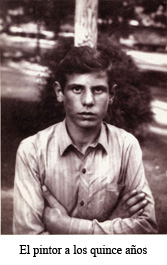
Conoce al escritor Álvaro Cunqueiro –al que ya leía desde los nueve años–, y también a los pintores Laxeiro y Manuel Pesqueira, que se convertirán en sus primeros referentes plásticos. Su vocación creadora comienza a desplazarse hacia la pintura, y opta por la formación autodidacta. En este sentido será crucial su largo viaje de 1972 por distintos países europeos para estudiar directamente la pintura de los maestros que venera: Van Gogh, Paul Klee, Rembrandt y Joan Miró; entre sus grandes referentes estarán, igualmente, Antoni Tàpies, Manuel Millares, Alberto Giacometti y Francis Bacon, así como la tradición medieval y el arte oceánico.
He got to know the writer Álvaro Cunqueiro –whom he had begun reading at the age of nine– and the painters Laxeiro and Manuel Pesqueira, who would become formative influences. As his creative vocation began to shift from poetry toward painting, he undertook lengthy travels throughout Europe (1972) to study in person work by the masters he revered, including Van Gogh, Klee, Rembrandt and Miró, to whom would be added Antoni Tàpies, Manuel Millares, Alberto Giacometti and Francis Bacon, as well as Medieval art and the Art of Oceania.

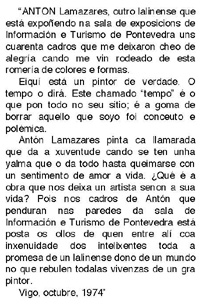

A su regreso permanece en Barcelona, donde trabaja como obrero de la construcción, al tiempo que estudia en sus centros de arte, en especial las colecciones de arte románico del Museo Marés y del Museo Nacional de Arte de Cataluña, y también el Museo Picasso. Después viaja a Madrid, donde se reencuentra con su maestro, Laxeiro, y donde conoce al poeta Carlos Oroza: la gran amistad que desde entonces comparten será decisiva para el joven artista, quien se entrega a la lectura de César Vallejo, Juan Ramón Jiménez y Luis Cernuda, y también William Blake, Hölderlin, Baudelaire, Trakl y Rilke. El intercambio entre pintura y poesía será una constante en toda su obra.
At the conclusion of his travels he stayed briefly in Barcelona, where he took a job as a construction worker, studying the works in its museums, particularly the collections of Romanesque art at the Marés Museum, the National Art Museum of Catalonia and the Picasso Museum in his free time. In Madrid, where he next alighted, he resumed contact with his maestro, Laxeiro, and got to know the poet Carlos Oroza: the close friendship that they shared ever since will be decisive for the young artist, who began his serious reading as a consequence of their friendship. He would immerse himself in the works of César Vallejo, Juan Ramón Jiménez and Luis Cernuda as well as William Blake, Hölderlin, Baudelaire, Trakl and Rilke. The dialogue between painting and poetry has remained a constant in all of his work.
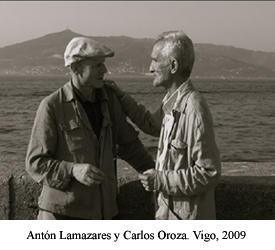
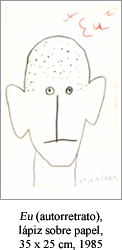
En 1973, con sólo 19 años, ya da a conocer sus cuadros en exposiciones colectivas e individuales. En 1975 viaja a París huyendo del servicio militar; a los tres meses regresa para evitar ser declarado prófugo, e ingresa en la Infantería de Marina, en El Ferrol. El 27 de septiembre de ese año le sobrecoge la noticia de los últimos fusilamientos del franquismo; uno de los reos ejecutados –tras un juicio sumarísimo y sin pruebas– es su amigo Humberto Baena, poeta pontevedrés de 25 años. Lamazares se sumerge en una honda depresión y es internado en el área de psiquiatría; durante ese tiempo escribirá su poemario Adibal.
In 1973, at the age of only 19, Lamazares had already begun exhibiting his paintings in group and solo shows. In 1975 he traveled to Paris in order to escape compulsory military service, but three month later he would return to avoid being declared fugitive and entered the Navy in El Ferrol. On September 27 of that year he learned the startling news of the final executions by the Franco regime; one of the executed culprits –after a summary judgment and without the presentation of any evidence– was his friend Humberto Baena, a 24-year-old poet from Pontevedra. The news sank Lamazares into a deep depression, resulting in a period of psychiatric institutionalization. It was during this time that he would write his collection of poems, Adibal.
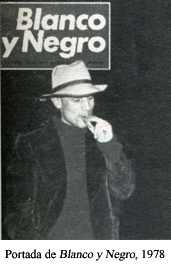
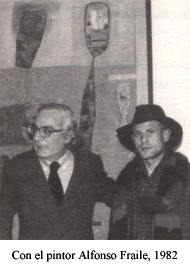
Entre 1976 y 1979 es becado por la Diputación de Pontevedra y el Ayuntamiento de Lalín, y después por el Ministerio de Cultura. En 1978 traslada su residencia a Madrid, donde entabla estrecha amistad con el pintor Alfonso Fraile, y también con la galerista Juana Mordó, el crítico de arte y poeta Santiago Amón, y el neurólogo Alberto Portera, figura aglutinadora de un amplio grupo de pintores –Antonio López, Antonio Saura, Lucio Muñoz, Martín Chirino, Rafael Canogar, José Guerrero–, escritores –Carlos Bousoño, Francisco Umbral– y cineastas –Carlos Saura, Elías Querejeta–, que se encuentran los fines de semana en su finca de Mataborricos, donde Lamazares realiza una exposición al aire libre en 1979. Ese mismo año conoce personalmente a Joan Miró, y viaja por la Provenza para volver a tomar contacto directo con Van Gogh, Cézanne y Matisse.
Between 1976 and 1979, he received grants from the Pontevedra Deputation, the city hall of Lalín and subsequently from the Spanish Ministry of Culture. In 1978 he moved to Madrid, where he formed a close friendship with the painter Alfonso Fraile, as well as with the gallerist Juana Mordó, the art critic and poet Santiago Amón and the neurologist Alberto Portera, the link to a large group of painters, including Antonio López, Antonio Saura, Lucio Muñoz, Martín Chirino, Rafael Canogar, José Guerrero, writers including Carlos Bousoño, Francisco Umbral and filmmakers such as Carlos Saura, Elías Querejeta, who would meet on weekends at his country house in Mataborricos, where Lamazares would mount an open air exhibition of his work in 1979. That same year he would meet Joan Miró, and travel through Provence to acquaint himself with the landscape of Van Gogh, Picasso, Cézanne or Matisse.

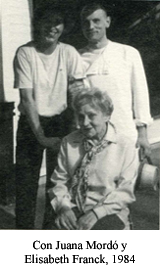
Los años ochenta son de intenso trabajo y también de gran proyección: antes de cumplir treinta años, la obra de Lamazares ya ha conquistado un espacio propio en el panorama español y también en el exterior. Utiliza materiales humildes, como el cartón y la madera, donde proyecta figuras de aliento lúdico y onírico, de línea expresionista, con un intenso cromatismo y una poderosa originalidad. Expone su obra con las galerías Juana Mordó (Madrid), Elisabeth Franck (Bélgica) y Sala Gaspar (Barcelona). Pronto se traslada a Nueva York, donde permanece dos años con una beca Fulbright, y su pintura evoluciona hacia una concepción más depurada y matérica, que expone en la galería neoyorquina Bruno Fachetti. Comparte su residencia entre Nueva York y Salamanca, y en 1988 viaja por Asia Menor –para visitar el templo de Didima, como homenaje al Hiperión de Hölderlin– y Estambul, donde le impresionan vivamente las iglesias bizantinas, cuya imaginería se deja traslucir en las obras que presenta en la Galería Miguel Marcos, elaboradas por yuxtaposición de maderas. En estos años expone la serie Xanelas e Sellos, y también Lerias, Letanías, Mámoas. En 1990 prepara una nueva serie de pinturas que llama Bifrontes, y se instala en París con una beca de la Cité des Arts.
The eighties were a time of intense creative activity and broad diffusion of his work: by the age of 30 Lamazares had already carved out a space in the panorama of Spanish as well as international art. Using humble materials such as cardboard or wood, his paintings of the time show playful and dreamlike figures depicted in an expressionistic mode, intensely chromatic and powerfully original. He exhibited at the galleries Juana Mordó (Madrid), Elisabeth Franck (Belgium) and Sala Gaspar (Barcelona). Soon he moved to New York, where he would remain for two years on a Fulbright Scholarship. There, his painting, which he exhibited at the Bruno Fachetti Gallery, developed in a direction at once purer and more material. For a period he divided his time between New York and Salamanca. In 1988 he traveled through Anatolia –visiting the temple of Didyma as a tribute to Hölderlin's Hyperion– and Istanbul, where he was deeply impressed by the Byzantine churches. Imagery reflecting his experience, articulated by the arrangement of wood in the paintings, can be seen in the work exhibited at Galería Miguel Marcos. During that time he exhibited the series Xanela e Sellos and Lerias, Letanías, Mámoas. In 1990 he began preparing a new series of works, which he calls Bifrontes (Bifacials), and he moves to Paris with a stipend from Cité des Arts.
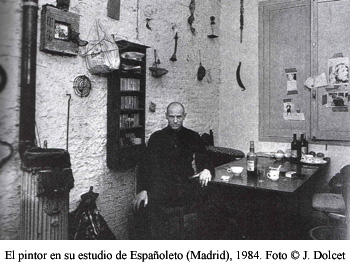
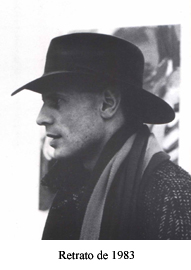
En 1991 abre un gran taller en Madrid, donde trabaja en las series Gracias vagabundas y Desazón de vagabundos. Ese mismo año nace su hijo Blas Lamazares Fraile. Realiza un nuevo viaje, esta vez a Berlín, donde le imanta la pintura de Caspar David Friedrich. En 1993 conoce personalmente a Antoni Tàpies, al que entrevista con motivo de haber recibido el León de Oro de la Bienal de Venecia. Ese año expone Brasas y baldío (aguafuertes y xilografías), y en 1994 la serie parisina Verde y moreno. Invitado por el CGAC, de mayo a noviembre de 1996 permanece en Galicia y pinta la serie Gracias do lugar: Eidos de Rosalía, Eidos de Bama. En 1995 nace su hija Inés Lamazares Fraile. En 1997 expone Sueño e colorao en Oporto, y en Madrid Dulce amor; de junio a noviembre, en Santa Baia de Matalobos (A Estrada), pinta al aire libre Bés de Santa Baia. Ese año con su amigo Domingo Sánchez Blanco conoce al escultor Jorge Oteiza, con quien mantiene una conversación de varias horas que es filmada por la cineasta Chus Gutiérrez. En 1998 pinta en Madrid la serie Titania e Brao, homenaje al verano de Castilla, y después se dedica a Pol en Adelán, homenaje a Galicia. Nace su hija Eira Lamazares Millares.
In 1991 he opened a large studio in Madrid, where he began to work on the series Gracias vagabundas (Wandering Graces) and Desazón de vagabundos (The Anxiety of Vagabonds). That same year his son Blas Lamazares Fraile is born. He takes another trip, this time to Berlin, where is magnetized by Caspar David Friedrich's paintings. In 1993 he met Tàpies and published an extensive interview with him subsequent to Tàpies having been awarded the Golden Lion at the Venice Biennale. That year he exhibited Brasas y baldío (etchings and xylographs), and in 1994 the Parisian series Verde y moreno. In 1995 his daughter Inés Lamazares Fraile is born. Invited by the Galician Centre for Contemporary Art, he spent May to November of 1996 in Galicia painting the series Gracias do lugar: Eidos de Rosalía, Eidos de Bama (The Place’s Charm: Rosalía’s Fields, Bama’s Fields). In 1997 he exhibited Sueño e colorao in Oporto, and in Madrid Dulce amor; from June to November he worked outdoors in Santa Baia de Matalobos on Bés de Santa Baia. That same year, with his friend Domingo Sánchez Blanco, he became acquainted with the sculptor Jorge Oteiza, a lengthy conversation with whom is filmed by Chus Gutiérrez. In 1998, in Madrid, he painted the series Titania e Brao, a tribute to the Castilian summer, and subsequently Pol en Adelán, a tribute to Galicia. His daughter Eira Lamazares Millares is born.
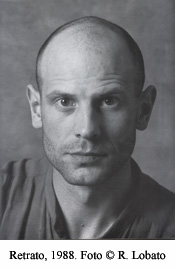

Realiza también tareas de arte gráfico, como los grabados que acompañan cinco textos de Gustavo Martín Garzo en el libro de artista El Canto de la Cabeza (Galería Sen, Madrid), o las litografías que acompañan el Itinerarium de Egeria (Raiña Lupa, París). En 2001 realiza una magna exposición en la Estación Marítima de La Coruña, bajo el título Un saco de pan duro, y presenta Sueño de la casa de las vacas en Colonia. En 2002 expone, en el Museo de Bellas Artes de Orense, Alma en lunes y Libro dos Jueces. Su obra es seleccionada para su promoción internacional por el programa Arte Español para el Exterior del Ministerio de Asuntos Exteriores (SEACEX), junto con la de artistas españoles como Saura, Chirino, Hernández Pijuan, Millares, Serrano, Oteiza o Tàpies. Lamazares viaja a Florencia y Asís, para acercarse a algunas piezas del arte renacentista y también al universo de San Francisco, al que dedica su serie Follente Bemil.
During this time, he also created numerous graphic works, including a suite of etchings to accompany five texts by Gustavo Martín Garzo in the artist’s book El Canto de la Cabeza (Galería Sen, Madrid) and the lithographs that accompany Itinerarium by Egeria (Raiña Lupa, Paris). In 2001 he mounted a grand-scale exhibition at the Seaport of A Coruña, under the title Un saco de pan duro (A Bag of Hard Bread) and presented Sueño de la casa de las vacas in Cologne. In 2002 he exhibited, at the Museum of Fine Arts in Orense, Alma en lunes and Libro dos Jueces. His work was chosen for international promotion, along with that of other Spanish artists such as Antonio Saura, Martín Chirino, Joan Hernández Pijuan, Millares, Pablo Serrano, Oteiza and Tàpies by the Ministry of Foreign Affairs under its program Spanish Art for the Outside World. Around this time Lamazares traveled to Florence and Assisi to examine works of Renaissance art as well as to gain familiarity with the milieu of Saint Francis, to whom he would dedicate his new series, Follente Bemil.
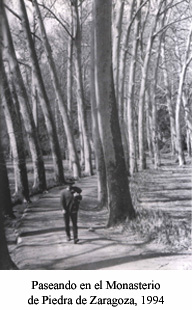
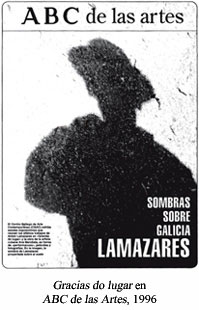
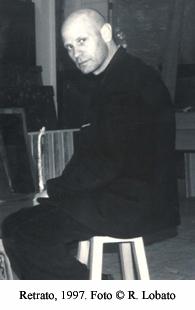
En 2004 traslada su residencia a Berlín, donde vive hasta 2016. Tras la muerte de su padre, comienza la serie E fai frío no lume (Hace frío en el fuego), y realiza grandes exposiciones en Eslovenia, y también en Hungría –Museo (Iglesia) Kiscelli de Budapest–. Se dedica después a la serie Domus Omnia, y colabora con sus grabados en otro libro de artista, con poemas de Carlos Oroza, Un sentimiento ingrávido recorre el ambiente (con cinco litografías), publicado en París (Yves Riviére & Raiña Lupa).
In 2004, he moved to Berlin where he lived until 2016. Following the death of his father he began the series E fai frío no lume (It’s Cold in the Fire). He was the subject of large exhibitions in Slovenia and in the Museum (Church) Kiscelli in Budapest (Hungary). Subsequently he devoted himself to the series Domus Omnia, and collaborated in the creation of a further artist’s book by Oroza: Un sentimiento ingrávido recorre el ambiente (A Weightless Feeling Permeates the Atmosphere; Paris, Yves Riviére & Raiña Lupa) to which he contributed five lithographs.
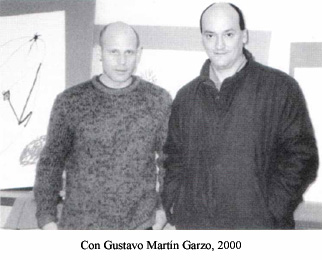
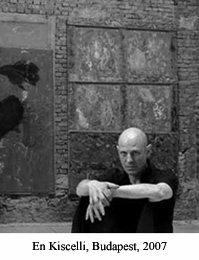
En 2008 expone una antología de su pintura en Ammán (Jordania) y de su obra gráfica en Damasco (Siria), y el poeta jordano Taher Riyad le dedica su serie Cantos de Lamazares. Ese mismo año exhibe Magna Domus Omnia en la Galería Kai Hilgemann de Berlín. En 2009 expone su obra en el Queen Sofía Spanish Institute en Nueva York, y también en el Centro Cultural de la Diputación de Orense, en el décimo aniversario de la entidad. Participa asimismo en exposiciones itinerantes dedicadas al poeta Vicente Aleixandre (España) y a Martin Luther King (Estados Unidos), y recibe el Premio Laxeiro por su trayectoria y proyección internacional. En 2010 exhibe su obra en la Iglesia de la Universidad, en Santiago de Compostela, y también en Tui. Expone regularmente en Madrid con Álvaro Alcázar y en Galicia con SCQ.
In 2008 he exhibited an anthology of his paintings in Amman (Jordan) and of his graphic work in Damascus (Syria), and the poet Taher Riyad dedicated the collection of poems Cantos de Lamazares to him. That same year he exhibited Magna Domus Omnia at the gallery Kai Hilgemann in Berlin. In 2009 he exhibited his work at the Queen Sofía Spanish Institute in New York, as well as in Orense (Spain), at the Cultural Centre of the Delegation during the 10th anniversary of its founding. He also participated in a traveling exhibition dedicated to the poet Vicente Aleixandre (Spain) and to Martin Luther King (USA), and received the Laxeiro Prize honoring his life’s work and its international renown. In 2010 he exhibited his work in the Church of the University, in Santiago de Compostela, and in Tui. He exhibits regularly in Madrid at Álvaro Alcázar Gallery and in Galicia with SCQ.
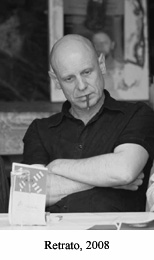
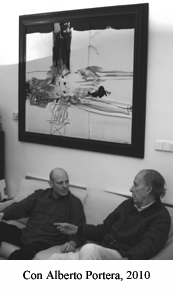
El 20 de mayo de 2010 la Universidad de Santiago de Compostela le otorga su Insignia de Oro: es la primera vez, en seis siglos de historia, que esa entidad dedica ese honor a un artista. El 28 de junio de 2010, en un acto celebrado en la Igrexa de San Domingos de Bonaval, la Xunta de Galicia le entrega la Medalla Castelao, que premia “la perfección, el simbolismo o la trascendencia de las obras” como reflejo de la entrega y fe “en la cultura, en la historia y en el ser de un pueblo”. En la primavera de 2011 el Nuevo Museo de Pontevedra le dedica la gran antológica Antón Lamazares 1980-2010, comisariada por Gloria Moure. En junio participa, junto con la actriz Mercedes Sampietro, en el homenaje al Premio Nacional de Poesía José María Millares Sall, en la Biblioteca Nacional de España.
On May 20, 2010 the University of Santiago de Compostela awarded him its Insignia de Oro (Golden Shield). This was the first time in six centuries that this honor was conferred upon an artist. On June 28, 2010 during a ceremony held at the Igrexa de San Domingos de Bonaval, the Xunta de Galicia conferred upon him the Medalla Castelao, acknowledging “the perfection, the symbolism and the transcendence of the works” as a reflection of the devotion to and faith “in the culture, the history and the essence of a people.” In spring of 2011, at the New Museum of Pontevedra, the big anthology Antón Lamazares 1980-2010 curated by Gloria Moure was dedicated to him. In June, he participated along with the actress Mercedes Sampietro, in the homage to the National Poetry Prize winner José María Millares Sall, at the National Library of Spain.
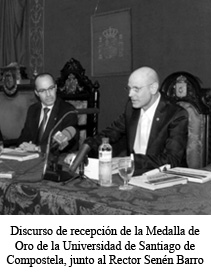
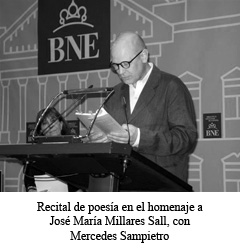
En 2012 los hermanos Nayra y Javier Sanz Fuentes (Rinoceronte Films) finalizan la película Tan Antiguo como el Mundo, un recorrido por el universo de la pintura, la poesía y la naturaleza, a través de la mirada de Antón Lamazares. La película gana en Bogotá el Círculo de Oro en el apartado de documentales de Arte. Lamazares realiza nuevas exposiciones en Berlín –en la Galería Kai Hilgemann y en el Instituto Cervantes–, y abre un nuevo taller en el corazón de Madrid. En 2013 realiza exposiciones en la Galería Rafael Pérez Hernando (Madrid), en el monasterio El Seminari (Tarragona), y en la Casa del Soldado (Centro Cultural de España) de Panamá, donde presenta su nueva serie Alfabeto Delfín, que imbrica lo pictórico y lo poético a través de un alfabeto inventado, con correspondencia con cada uno de los signos del alfabeto latino. Durante 2014, la exposición itinerante Alfabeto Delfín se exhibe en Panamá y después en México, y se expone la serie Inda é en la galería Odalys de Madrid. Además, participa Lamazares en la exposición colectiva internacional On the road, dedicada a San Francisco de Asís, junto con artistas como Boltanski, Kounellis, Tàpies, Beuys o MacCall.
In 2012 the siblings Nayra and Javier Sanz (Rinoceronte Films), finished the film Tan Antiguo como el Mundo, which presents a journey through the universe of painting, poetry and nature from the perspective of Antón Lamazares. The movie was awarded with the Golden Circle in Bogotá in the section of art documentaries. Lamazares carried out new exhibitions in Berlin –at the Gallery Kai Hilgemann and the Cervantes Institute–, and opened a new studio in the heart of Madrid. In 2013 he had exhibitions at the gallery Rafael Pérez Hernando (Madrid), at the monastery El Seminari (Tarragona), and at the Casa del Soldado (Cultural Center of Spain) in Panama, where he presented his new series Alfabeto Delfín, interweaving the pictorial with the poetic by means of an invented alphabet, in which each sign corresponds to a letter of the Latin alphabet. In 2014, he exhibited Alfabeto Delfín, an itinerary solo show, in Panamá and Mexico, as well as his series Inda é at the gallery Odalys in Madrid. In addition, Lamazares participated in the international group show On the Road, dedicated to Francis of Assisi, along with other artists such as Boltanski, Kounellis, Tàpies, Beuys or MacCall.
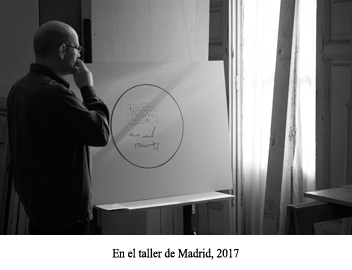
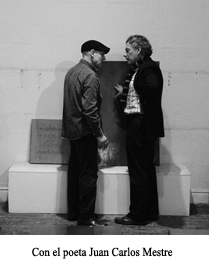
En 2015 presenta en la Sala Gaspar de Barcelona su serie "Compostela"; en el Centro Conde Duque de Madrid se expone la colectiva "Alexandro. Lamazares. Vidal Souto", y en la Feria Internacional de Turín Artissima se presenta el solo project "Antón Lamazares" en la Galería Rafael Pérez Hernando. En 2016 exhibe en el Círculo de Bellas Artes de Madrid su Alfabeto Delfín, y la Fundación Antonio Pérez, Centro de Arte Contemporáneo, de Cuenca, acoge en su iglesia la exposición "Lamazares", comisariada por Ignacio Muñoz, que incluye el díptico Eidos de Bama. Desde el otoño de 2015 a la primavera de 2017 trabaja en Flor Novoneyra, dedicada al poeta gallego Uxío Novoneyra (1930-1999).
In 2015 he presented in the Sala Gaspar in Barcelona his series “Compostela,” in the Center Conde Duque in Madrid he participated in the group show “Alexandro. Lamazares. Vidal Souto,” and at the Turin International Fair Artissima he was selected for the solo project “Antón Lamazares” from the gallery Rafael Pérez Hernando. In 2016, he exhibited his Alfabeto Delfín at the Círculo de Bellas Artes of Madrid, and the Fundación Antonio Pérez, Center for Contemporary Art of Cuenca, displayed at its church the exhibition “Lamazares,” curated by Ignacio Muñoz, that included the diptych Eidos de Bama. From fall 2015 to spring 2017 he worked at Flor Novoneyra, dedicated to the Galician poet Uxío Novoneyra (1930-1999).

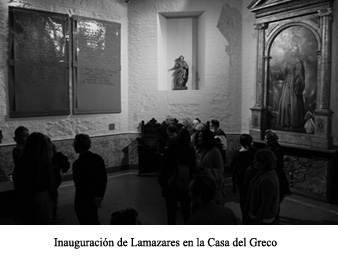
Durante 2017 y 2018 se expone en el Museo Gaiás la extensa serie de Flor Novoneyra, mientras Lamazares prepara una nueva colección de obras construidas a partir del Alfabeto Delfín y dedicadas al Greco y a San Juan de la Cruz. La exhibición tiene lugar en el Museo del Greco en Toledo, en 2018-2019. Por las mismas fechas, su pieza de gran formato Eidos de Bama (1996, técnica mixta sobre cartón y madera, 210 x 571), se incluye en la exhibición colectiva El poder del arte que con motivo del aniversario de la Constitución española presenta el Museo Reina Sofía en las salas del Congreso y el Senado. En estos últimos meses, sus obras han viajado además a exposiciones individuales y colectivas nacionales y también internacionales, en espacios como Bogotá, Miami, París, Nueva York o Turín.
In 2017 and 2018, the extensive series Flor Novoneyra was exhibited at the Museo Gaiás, while Lamazares prepared a new collection of works, based on Alfabeto Delfín and dedicated to El Greco and San Juan de la Cruz. The exhibition took place at Museo del Greco, Toledo, in 2018-2019. During this time, his large-scale work Eidos de Bama (1996, mixed media on cardboard and wood, 210 x 571) was included in the group show El poder del arte, on the occasion of the anniversary of the Spanish Constitution, presented by the Museo Reina Sofía in the halls of the Congress and the Senate. In these last months, his works were also shown in solo shows and group shows, both nationally and internationally, in places such as Bogotá, Miami, Paris, New York, or Turin.
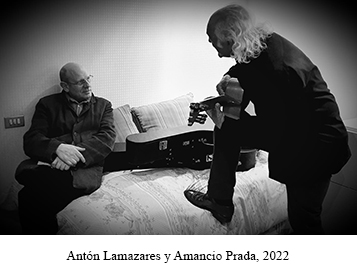
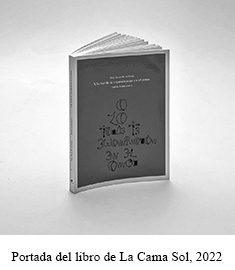
En 2020, Lamazares participa con la Galería Rafael Pérez Hernando en la feria internacional ARCO y proyecta nuevas rutas para el Alfabeto Delfín. En 2022 —tan pronto como lo permiten las restricciones derivadas de la pandemia— inaugura en la galería Odalys la exposición Cántico Espiritual, presentada con un concierto de Amancio Prada y dedicada a san Juan de la Cruz, al que también homenajea el libro A la tarde te examinarán en el amor (La Cama Sol).
In 2020, Lamazares participated with Gallery Rafael Pérez Hernando at the International Contemporary Art Fair ARCO and charts a new course for Alfabeto Delfín. In 2022, as soon as the restrictions derived from the pandemic allowed for it, the opening of the exhibition Cántico Espiritual opened at Gallery Odalys was accompanied by a concert by Amancio Prada. The show was dedicated to John of the Cross, to whom he also paid homage with the book A la tarde te examinarán en el amor (La Cama Sol).
Biografía por S. Millares / Traducción por L. Hatry